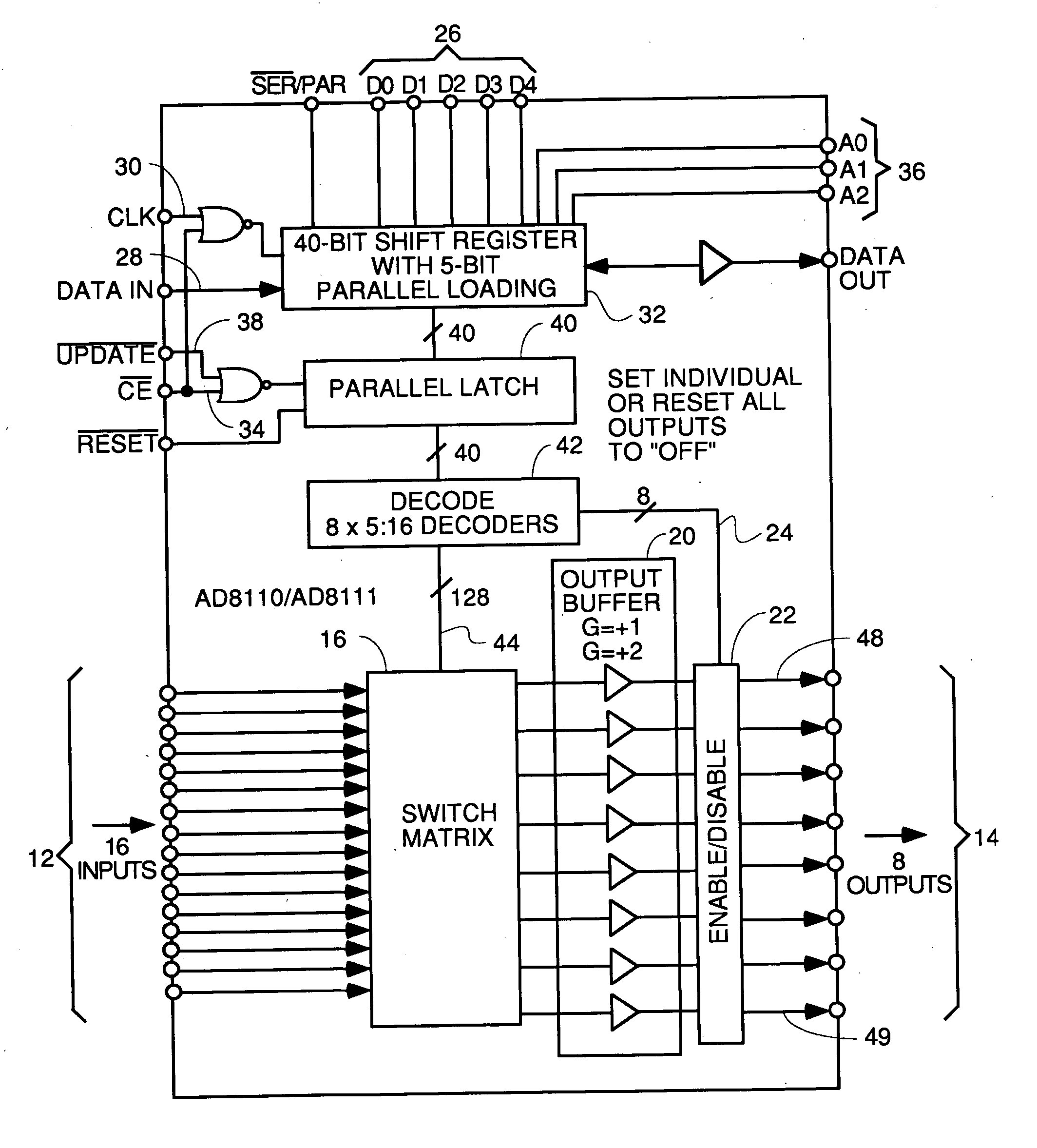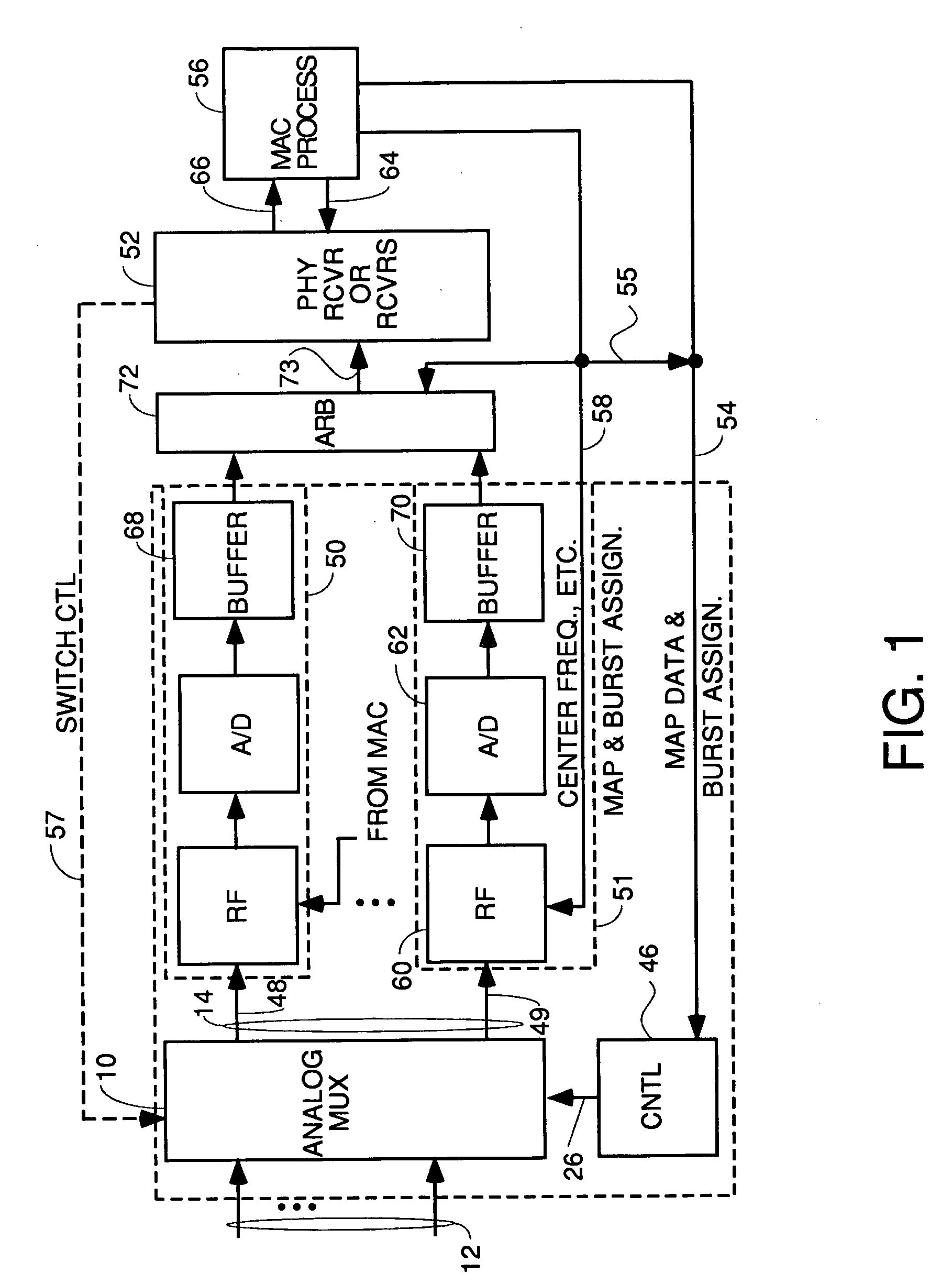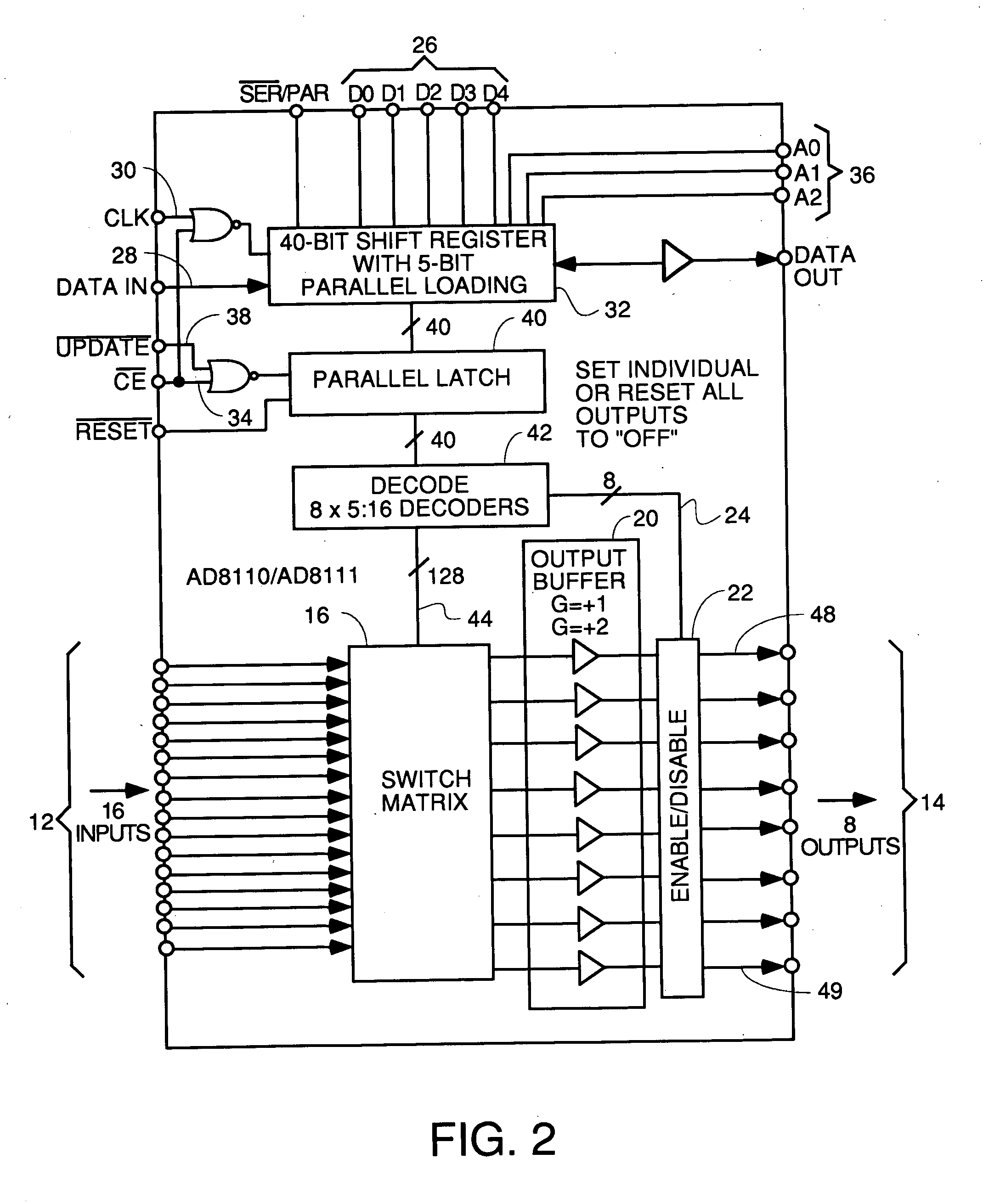Upstream only linecard with front end multiplexer for CMTS
a technology of front end multiplexer and linecard, which is applied in the field of cable modem termination systems, can solve problems such as noise aggregation, and achieve the effect of easy addition
- Summary
- Abstract
- Description
- Claims
- Application Information
AI Technical Summary
Benefits of technology
Problems solved by technology
Method used
Image
Examples
Embodiment Construction
[0057] The collection of front end multiplexer embodiments disclosed in this patent application provide capability for a cable modem termination system (CMTS) to activate previously un-provisioned upstream channels by coupling them to any physical RF upstream port and shared DOCSIS receiver. The previously un-provisioned upstream channel can be associated with any downstream channel or DOCSIS MAC domain. This provides a cable system operator to provide additional upstream capacity to a return path combining as the penetration increases or additional services are offered.
[0058] The crossbar switch also provides the ability to do spectrum analysis by utilizing one unused PHY receiver to listen to all RF ports using the ICF block in the PHY receiver. To do this, the receiver is connected to each RF port one after the other and will scan all the possible channels to get the spectrum of the entire upstream frequency range.
[0059] Referring to FIG. 1 there is shown a block diagram of a b...
PUM
 Login to View More
Login to View More Abstract
Description
Claims
Application Information
 Login to View More
Login to View More - R&D
- Intellectual Property
- Life Sciences
- Materials
- Tech Scout
- Unparalleled Data Quality
- Higher Quality Content
- 60% Fewer Hallucinations
Browse by: Latest US Patents, China's latest patents, Technical Efficacy Thesaurus, Application Domain, Technology Topic, Popular Technical Reports.
© 2025 PatSnap. All rights reserved.Legal|Privacy policy|Modern Slavery Act Transparency Statement|Sitemap|About US| Contact US: help@patsnap.com



